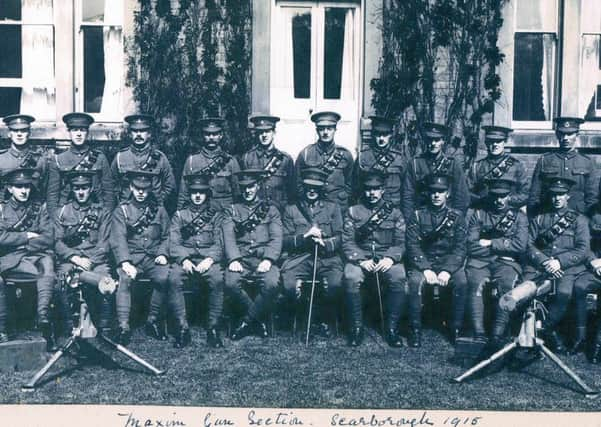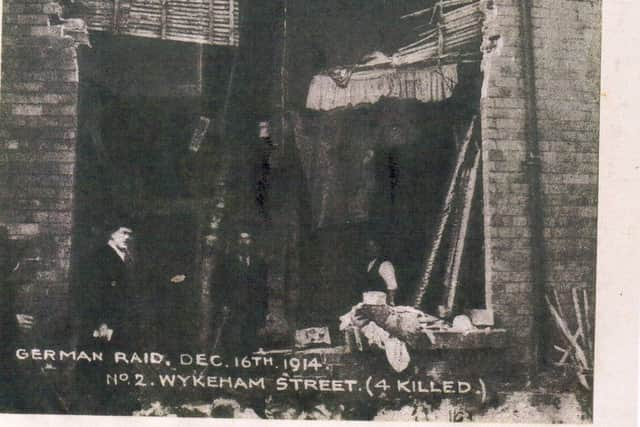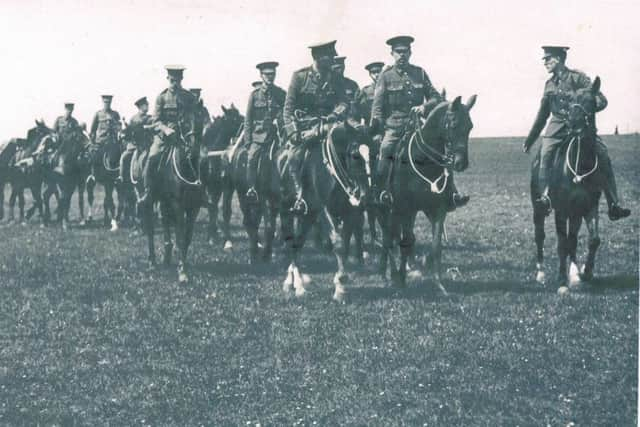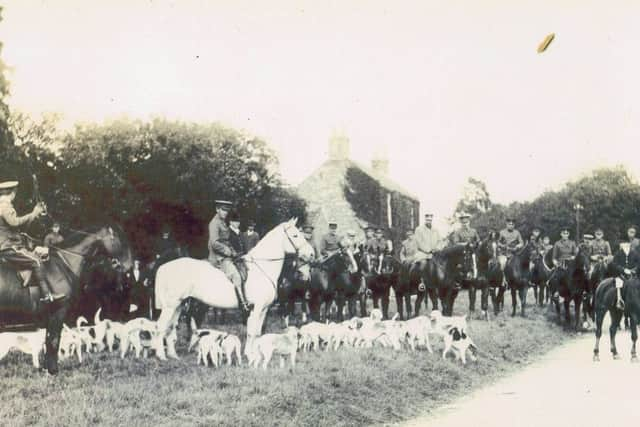HERITAGE: Tracing the history of Doncaster heroes


The connection between the Dragoons, Doncaster and local nobility was as strong in 1914 as it was in 1794 when the Regiment was formed. The Dragoons were now part of the Territorial force and were comprised of four squadrons based at Sheffield, Wakefield, Doncaster and Huddersfield.
Nether Hall in Doncaster was the Regimental Headquarters and the commanding officer was Lieutenant Colonel William Mackenzie-Smith of Barnes Hall, Ecclesfield, a large estate near Sheffield. William was educated at public school and university and followed the traditional country pursuits of land owning families, becoming a fine and accomplished horseman.


Advertisement
Hide AdAdvertisement
Hide AdThere were two other Smith brothers serving with the Dragoons at this time Major Steven A. Smith was commanding officer of C Squadron and Captain Phillip G Smith was signalling officer of the Headquarters both based at Nether Hall.
Another notable member of the local nobility, Lieutenant the Honourable EFL Wood served with C Squadron at Nether Hall and the Regimental Chaplain was the Venerable Archdeacon Sandford the vicar of Doncaster Parish Church.
When war was declared in August 1914 three squadrons, Sheffield, Doncaster and Wakefield were mobilised in Doncaster forming the 1st/1st Regiment Queens Own Yorkshire Dragoons. Horses were collected and after spending the night on the Racecourse the Regiment set off for their first wartime posting in Scarborough having been instructed to patrol and defend the east Yorkshire coast from possible attack or invasion. It was reported that the only break in the journey, which must have been a spectacular sight, was at Tadcaster when the entire Regiment enjoyed the hospitality of Messrs John Smith’s Brewery.
Recruiting continued in Doncaster and a second line regiment was formed in September and after training they were also posted to the east Yorkshire coast.


Advertisement
Hide AdAdvertisement
Hide AdWhilst on the east coast the regiment began intensive training for overseas service but there were opportunities for relaxation such as games of polo on the beach and in October the now Captain, the Honourable E.F.L.Wood M.P. and his Harriers took part in an event at Pocklington.
The 1st/1st Regiment Queens Own Yorkshire Dragoons was a cavalry unit but the needs of modern front line warfare meant that a machine gun detachment was introduced into training.
Training was interrupted on the 16th December 1914 when Scarborough was subjected to bombardment from German battleships. Over 200 of the Dragoons immediately reported to the civilian authorities and assisted in fire fighting duties and searching the shelled damaged buildings to ensure that any casualties received the necessary attention. It was reported that 17 civilians had died and 99 were wounded during the bombardment.
In June 1915 orders came from the War office instructing that the three squadrons that formed the 1st/1st Regiment of the Dragoons were to be posted as divisional cavalry to three divisions of the new second army which were part of the Southern Command, with the 2nd/1st and the 3rd/1st reserve regiments staying on the east coast.


Advertisement
Hide AdAdvertisement
Hide Ad“A” Squadron (Sheffield ) joined the 17th Division (Infantry) at Winchester on the 23rd June 1915 and were shipped to France on 15th July 1915.
“B” Squadron (Doncaster, Headquarters and Machine gun section) together with Lt Colonel Mackenzie Smith joined the 37th Division (Infantry) at Andover on the 20th June 1915 and were shipped to France on 31st July 1915.
“C” Squadron (Wakefield) joined the 19th Division (Infantry) at Bulford on the 23rd June 1915 and were shipped to France on 19th July 1915.
During the following 10 months all three squadrons served their divisions as cavalry behind the lines in constant readiness. Their duties included acting as mounted infantry, observation and also trench working parties.


Advertisement
Hide AdAdvertisement
Hide AdThe Dragoons were present at the battles of the Somme and Ancre in 1916. During August 1916 some of the Dragoons formed Hotchkiss gun teams that performed admirably on the front line and one of the officers originally from “A” squadron was awarded the Military Cross.
During the following year, 1917, the Dragoons were present at battles of the Somme and Ypres and at the end of 1917 eight of their number had lost their lives.
Any thoughts of an early return home after the armistice was signed had to be put on hold as the Dragoons were selected to be the advance guard of the Army of occupation.